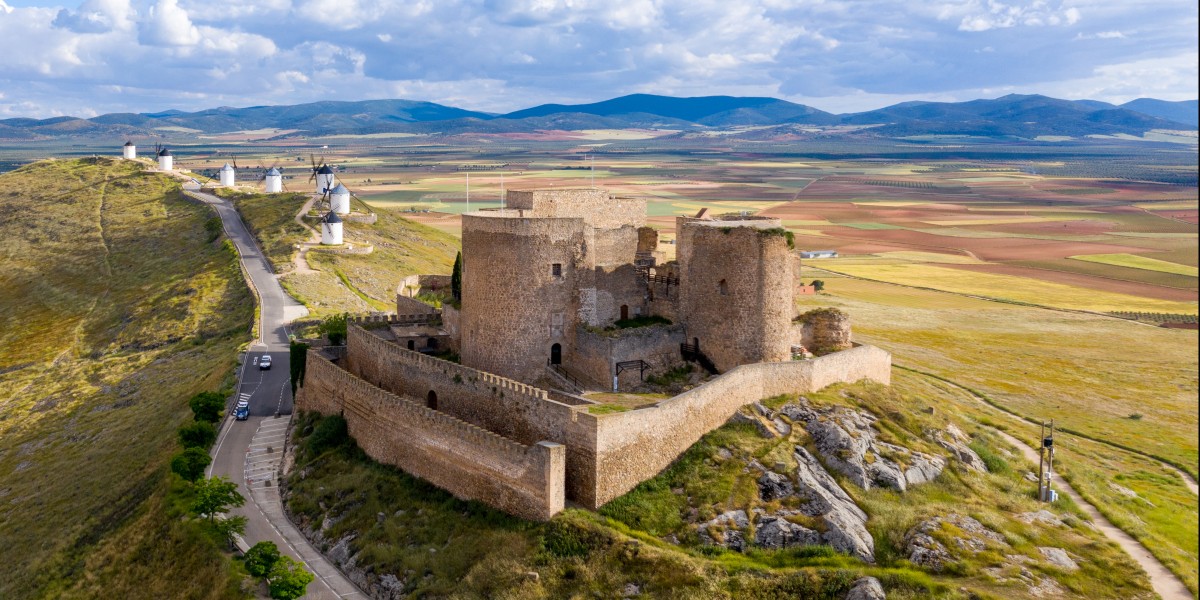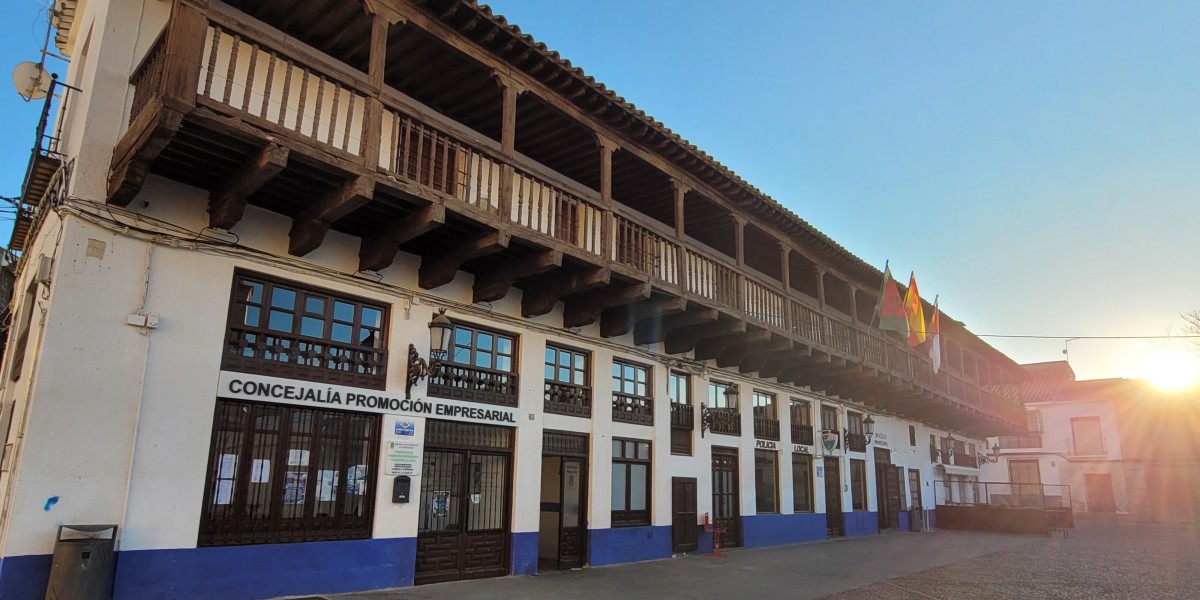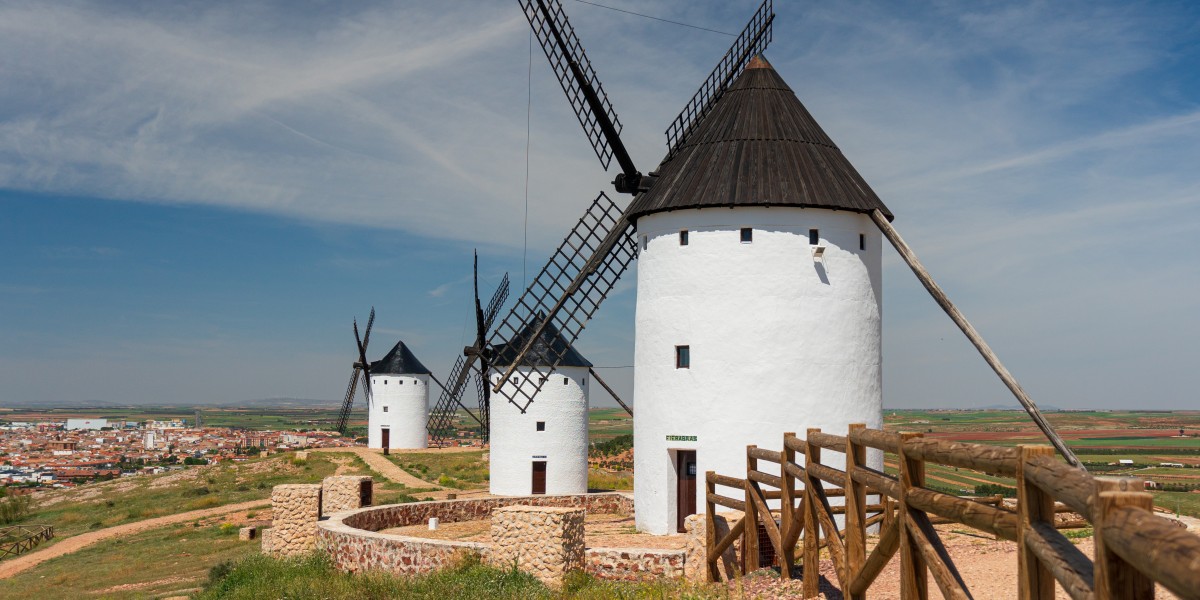
Consuegra, a charming village in the province of Toledo, is famous for its impressive collection of windmills perched on Calderico Hill. It is also home to a medieval castle that dominates the landscape, providing a glimpse into the past. This village is an ideal destination for those wishing to immerse themselves in the historic region of La Mancha.
History of Consuegra
The history of Consuegra is as fascinating as it is ancient. The town’s roots date back to Roman times when it was known as Consabura in the 1st century BC. Its strategic location near the Amarguillo River made it hugely important. During the Muslim period, the area gained further significance with the construction of a castle atop Calderico Hill, which was later conquered by Christian forces in the 11th century, led by Alfonso VI.
One of the most tragic chapters in its history occurred in 1097, when Diego Rodríguez, the son of the Cid Campeador, was killed in the Battle of Consuegra while fighting against the Almoravids. Today, the town is renowned for its windmills, famously immortalised in Miguel de Cervantes’ Don Quixote of La Mancha.
If you’re wondering when the festivities in Consuegra take place, the town hosts the Saffron Festival every year on the last weekend of October, celebrating the significance of this crop to its economy and culture.

What to see in Consuegra in one day
This town in Toledo is a destination that seamlessly blends history, culture and stunning landscapes. Consuegra is undoubtedly worth a visit, thanks to its key points of interest.
- Consuegra Castle: This majestic castle, located on top of Calderico Hill, offers unrivalled panoramic views of the La Mancha landscape.
- Windmills: Consuegra's iconic windmills are a must-see. The "giants" of La Mancha have been restored and offer a unique insight into the region's history and culture.
- Cristo de la Vera Cruz Hermitage: A place of devotion and peace, this hermitage is known for its architectural beauty and religious importance.
- Museum: For history buffs, this museum houses a collection of artefacts that chronicle Consuegra's rich history from Roman times to the present day.
- Saffron festival: If you visit Consuegra in autumn, don't miss this colourful celebration that pays tribute to one of the most valuable spices in the world.

Consuegra's windmills
The windmills are, without a doubt, the most iconic symbol of Consuegra. Situated on Calderico Hill, these windmills were immortalised in literature by Miguel de Cervantes in Don Quixote of La Mancha, who referred to them as giants. Originally, there were thirteen windmills, but today twelve remain, each with its own name.
Several of these windmills are open to the public and have been transformed into museums, where visitors can learn about the traditional grain milling process. Moreover, from their elevated position, you can enjoy panoramic views of the surrounding landscape, making the experience even more memorable.
Consuegra Castle
Consuegra Castle is an imposing medieval fortress that stands proudly atop Cerro Calderico, alongside the region’s iconic windmills. Built in the 10th century by the Moors, it held significant strategic value during the Reconquista, changing hands several times between Moors and Christians.
In the 12th century, the castle was handed over to the Order of Saint John, who expanded and reinforced it, transforming it into a crucial defensive stronghold in the region. If you’re wondering how long a visit to Consuegra Castle takes, you should allow around an hour to explore the grounds, with slightly less time needed for the windmills.

Consuegra Castle admissions
General admission to visit the Castle and the windmills costs €7, with discounts for children aged 7 to 12 (€3.50) and free entry for children under 7, making it an ideal place if you are wondering what to see in Consuegra with children. On the other hand, if you prefer a guided tour of the Castle, the price is €8 per person.
Getting to Consuegra
Often regarded as one of the best towns near Toledo, this charming destination is easily accessible from several major cities in Spain. Here are the ways you can get there.
- By car: Consuegra is a 45-minute drive from Toledo and an hour and a half from Madrid. The access road to the town is the CM-42 motorway. To park in Consuegra, there are spaces to park at the windmills themselves and at the foot of the Castle.
- By bus: There are regular bus services from Madrid and Toledo that will take you directly to the Consuegra bus station, located on Avenida Castilla-La Mancha.

Consuegra's surroundings
Consuegra's surroundings offer a variety of experiences that perfectly complement your visit to the town. These are some of the beautiful spots and towns near Consuegra.
- Cabañeros National Park: Just a short drive away, this national park is a haven for wildlife and offers stunning hiking trails.
- Toledo: Known as the City of Three Cultures, Toledo is a 45-minute drive away. Its historic centre was declared a World Heritage Site by UNESCO.
- Alcázar de San Juan: This nearby town is famous for its cultural heritage and festivities. Don't miss its museums and the opportunity to sample the local cuisine.
- Lagunas de Ruidera: This spot is a little further away, but worth the trip. This group of lagoons is a natural oasis offering water activities and picnic areas.

Living in Consuegra
This charming town, renowned for its iconic windmills and imposing medieval castle, offers a quality of life that blends tranquillity with culture. The residents of Consuegra enjoy a peaceful environment, surrounded by natural landscapes and a warm, welcoming community. Life here moves at a slower pace, allowing you to savour every moment.
If you’re wondering how many inhabitants Consuegra has, the town is home to around 9,700 people in 2024, making it a town of notable demographic importance in the La Mancha region.
